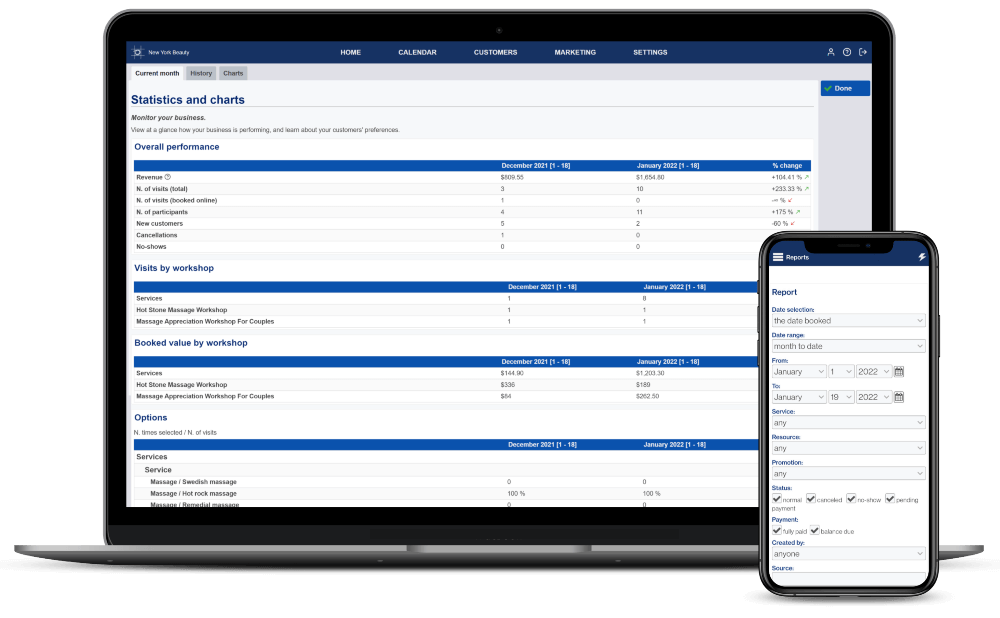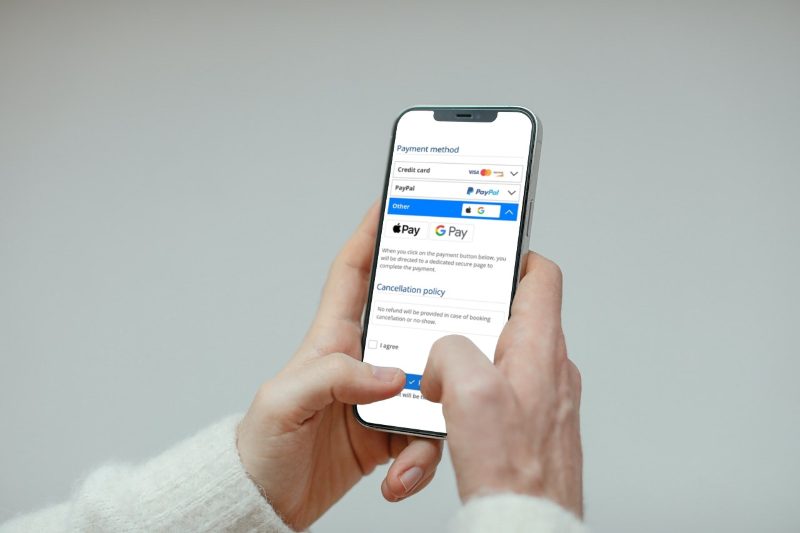
How to Reduce No-Shows and Cancellations
A “no-show” happens when a client of a service-based business fails to show up for a scheduled appointment without any rescheduling or cancellation notice beforehand.
For businesses that rely on client appointments, no-shows can be a major challenge. Not only can it result in a loss in revenue, but when they happen too frequently, it can lead to wasted resources and reduced staff morale.
This is why managing and reducing no-shows is very important, but in practice doing so can be easier said than done.
In this article, we will discuss all you need to know about reducing no-shows, and we will cover the following points:
- What is a no-show, and why it happens
- The negative impact of no-shows and cancellations on service businesses
- Strategies for reducing no-shows
- How a 24/7 online booking function can reduce no shows
- Best practices for improving communication with clients and handling cancellations/rescheduling
Understanding the problem of no-shows and cancellations
Why are no-shows a major problem for service providers? Isn’t cancellation, after all, the right of a customer?
Cancellation is indeed the right of a client or customer, and they should be allowed to cancel appointments whenever they need to do so. However, it’s also the client’s responsibility to notify the service business, preferably within a long enough time frame so the service provider has enough time to fill the canceled time slot with another client.
When clients fail to notify the business about the cancellation, this is called a “no-show.”

If the service business can’t fill the canceled appointment slot with another client, it will still incur lost revenue and resources due to this no-show, which can actually be a serious issue:
- According to a study by SCI Solutions, no-shows can cost up to $150 billion every year in the global healthcare industry
- For small businesses, no-shows can account for up to 30% of revenue loss. (Source: Business News Daily)
- A study from National Center for Biotechnology Information estimated a $ 16.65 million revenue loss in a single year due to no-shows alone
Above are just some of the many more examples of how no-shows and cancellations can hurt service businesses. To summarize, the negative consequences of no-shows and cancellations without notice are as follows:
- Loss revenue: the most obvious impact of no-shows and cancellations is lost revenue. When cancellations happen without notice, or the client simply doesn’t show, the service business may not have enough time to fill the appointment slot with another client.

- Wasted time and resources: typically, the service business would have invested resources and time preparing for each appointment, like reserving space, setting up equipment, and so on. When the appointment is canceled, and they can’t fill it with another client, this will become a sunk cost.
- Inefficient scheduling: no-shows and cancellations would make it more challenging for the service business to manage their schedules. This can lead to scheduling gaps, or other issues in the scheduling, leading to further losses in revenue.
- More administrative work: no-shows may cause the service business to spend more time on time-consuming administrative tasks such as calling clients to fill the slot, updating schedules, sending out reminders, and managing cancellations.
- Negative impact on staff morale: cancellations without notice and no-shows can significantly impact staff morale. They may feel that their effort and time have been wasted and may result in reduced productivity for the day or even in longer terms.
- Difficulty in forecasting and strategic planning: no-shows and cancellations can make it more difficult for the service business to plan its future strategies and forecast its revenue, staffing needs, and expenses.
- Financial penalties: in some cases, service businesses may have to pay penalties or fees for canceling appointments with vendors, such as equipment providers or rental spaces.
Strategies for minimizing no-shows and cancellations
As we can see, no-shows and cancellations can have significant negative impacts on service businesses with potential consequences across various aspects of the business. This is why it’s crucial for service businesses to have strategies in place to reduce no-shows and minimize the potential impact.

Below, we will explore some of the most effective strategies for reducing no-shows and cancellations:
1. Use of appointment reminders and confirmations
Various studies, such as this one, have shown that sending reminders is effective at reducing no-shows and cancellations by 11%.
Establish a system and policies to send appointment confirmations via email, text, or phone. Then, one day before the appointment and/or the day of the appointment, send another reminder.
These reminders can also provide the opportunity for clients to reschedule if they need to.

Some tips and best practices on how to use reminders to reduce no-shows:
- Different clients may prefer different modes of communication: text, email, phone call, or others. Try to determine the most effective method for each client to reduce friction.
- Send reminders in advance, at least a day before the appointment. Give them enough time to reschedule or cancel and give yourself enough time to fill the time slot in case cancellation happens.
- Personalize the reminder by using the client’s name, and include the details of the appointment (i.e., date, time, location)
- If you have a cancellation policy (more on this below,) remind them about this and provide clear instruction about how to reschedule or cancel

- Make it as easy as possible for clients to confirm, cancel, or reschedule their appointment. For example, allow them to confirm with a simple text reply, or via an online confirmation link
- Consider using an automated system to send reminders (more on this in the next point) to ensure consistency and save time
- Do follow up after a no-show. Contact the client who have missed their appointments to understand their reason and reschedule if possible
2. Taking online appointments allows clients to schedule and manage their appointments at any time
Traditional (phone-based) appointment booking requires clients to call, send a text, or visit during business hours. Meaning, when a client needs to cancel their appointment, they may be reluctant to do so simply because the process can be a hassle (or they may feel that it’s embarrassing for them.)
With online booking, on the other hand, clients can simply log in to the website and make a few clicks to cancel their appointment and probably reschedule into a different time slot. This alone can significantly reduce the number of no-shows.

Not to mention, online booking system like Bookeo can provide clients with automated appointment reminders, which, as we’ve discussed, are effective in reducing no-shows. Bookeo also offers the ability to customize the booking process for clients, making it easier for clients to book and manage their appointments.
For example, you can allow clients to choose their preferred service provider easily on the website, schedule recurring appointments, and so on. More flexibility and convenience can help reduce cancellations and no-shows.
Here are some tips and best practices for using 24/7 online booking to reduce cancellations and no-shows:
- Above anything else, make the booking process as convenient and easy as possible. Use simple and straightforward booking forms, and make sure to provide clear instructions for everything without cluttering the website.
- Provide clear instructions and make it easy for clients to reschedule their appointments online if they need to. Avoid overwhelming or frustrating them, which may result in no-shows instead.
- Keep track of the number and frequency of cancellations and no-shows. With appointment scheduling software like Bookeo and its built-in analytics, you can easily track real-time insights and data on no-shows, successful bookings, and cancellations. Identify trends and patterns, and adjust your strategies accordingly.

3. Have a clear and strict cancellation policy
Another effective way to reduce no-shows is to implement a clear and enforceable cancellation policy.
A typical cancellation policy for a service business may include:
- Notice period: the period in which a client can cancel an appointment without facing any penalty. For example, 1×24 hours. The purpose of this period is for the business to be able to fill the slot with another client. The period may vary depending on the type of appointment or service.
- Cancellation fee: the business may impose a cancellation fee (an amount that will be charged to a client if they cancel their appointment) when the client fails to provide notice within the notice period or if they fail to show up for their scheduled appointment.
- Deposit: the service business may require the client to pay a deposit in advance to secure their appointments, which may function as a cancellation fee (non-refundable) in case of no-shows or cancellations outside the notice period.

- Rescheduling: how the client can reschedule a canceled appointment, including any requirements or additional fees for doing so.
For example, here is a sample cancellation policy for a fictional hair salon business:
“We understand that unforeseen circumstances may arise, and you may need to cancel your appointment.
Yet, we kindly ask you to provide us with at least 48 hours’ notice if you need to cancel (or reschedule) your appointment. If you cancel your appointment with less than 48 hours’ notice, unfortunately, you will be charged 30% of the service fee.
You will be charged 100% of the service fee if you fail to show up for your appointment without giving any notice (no-show.)
To secure your appointment, we require a deposit of $30, which will be applied to your service fee at the time of your appointment. Your deposit will be forfeited if you cancel your appointment outside of the notice period. If you need to reschedule your appointment to avoid losing your deposit, please contact us at least 48 hours in advance.
We appreciate your understanding and cooperation.”
4. Offering incentives for showing up to appointments
Service businesses can also offer incentives to clients who show up for their appointments, for example, by offering small rewards or discounts.
You don’t need to offer too big of an incentive, even small but tangible incentives can be effective by creating a sense of accountability. Clients may be more likely to prioritize their appointments to pursue the rewards.
Some examples of these incentives include:
- Discounts or coupons: for example, a car service company could offer 10% off the client’s next visit for showing up on time.

- Loyalty program: for example, a hair salon could offer a free haircut if a client successfully shows up to 5 of their scheduled appointments.
- Referral program: for example, a dental office could offer free treatment to clients who refer five new clients who successfully attend their appointments without any cancellations.
For this incentive campaign to work, it’s important to pay attention to several best practices:
- Make sure to clearly communicate the incentive program. Use multiple channels (website, email newsletter, social media, text message) if necessary.
- Make sure it’s easy for both yourself and your clients to track progress towards earning incentives. For example, via a punch card system or a loyalty app.
- Make sure the incentives are relevant to both your business and your clients.

- If it’s a progressive goal (i.e., 5 visits without cancellations), make sure the goal is fair and achievable. Or else it may be counterproductive and may ruin your reputation.
- Provide the rewards timely as soon as the clients meet the goals. This will help build your reputation and keep the clients engaged.
5. Establish transparent pricing information
Lack of transparency of pricing information is a common reason for cancellations without notice, and understanding why clients skip appointments is critical to reducing no-shows.
Thus, make sure that your service pricing is transparent. When your clients understand exactly what they will be paying for your services, it’s one less reason for them to cancel or not show up for their appointment.

Consider:
- Clearly communicate pricing upfront: in most cases, it’s better to be upfront with clients about your pricing structure. Provide detailed and transparent pricing information (i.e., on your website, social medial, etc.), and be sure to answer any inquiries clients may have about pricing.
- Avoid hidden fees: unexpected and hidden fees can frustrate your client and may lead to no-shows (and hurt your reputation.) It’s best to make sure all fees are clearly outlined.
- Provide flexible payment options: provide various payment options so it’s easier for clients to pay. This can include credit card payment, online payment, or even recurring billing, depending on the types of services you offer.
- Offer packages and discounts: you can offer discounts, packages, and memberships to clients who book multiple appointments or discounts for those who book appointments (and show up) during off-peak hours.
Transparent and clearly-communicated pricing is very effective for reducing cancellations in general. Aim to be upfront about pricing and offer flexible payment options to increase the likelihood that they will show up.
Wrapping Up
Reducing no-shows and cancellations without notice is critical for service businesses to improve their day-to-day operations, increase productivity, and enhance client satisfaction.
Utilizing 24/7 online booking on your website with services like Bookeo has been proven to be one of the most effective ways to prevent cancellations. Not only that, but online booking can also dramatically streamline and improve the efficiency of your business’s booking process, increasing the number of bookings in the process.
By implementing these strategies and best practices for reducing no-shows, you can mitigate the potential impact of cancellations and no-shows, optimize your team’s productivity, and ensure a more successful service experience for both your business and your clients.

